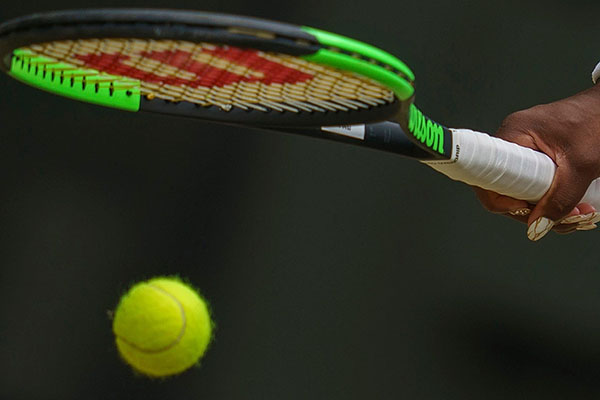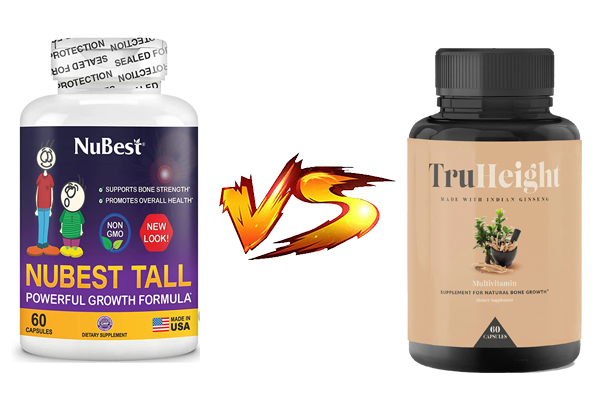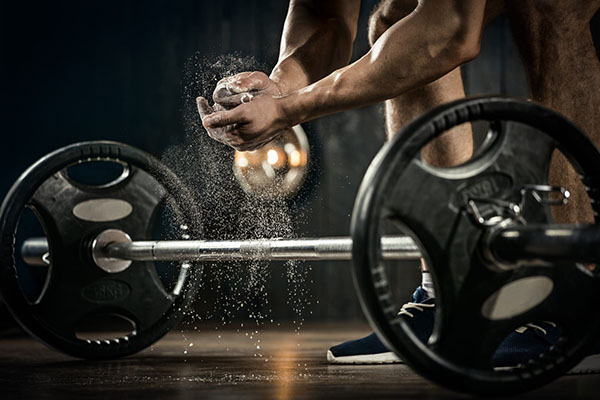Tennis, the exhilarating and captivating sport, has been captivating the hearts of many. Beyond its thrilling matches and competitive nature, tennis offers a multitude of health benefits that cannot be ignored. As society becomes more aware of the importance of physical activity for our overall well-being, it’s crucial to explore how tennis can positively influence growth and development. In this article, we will dive into the fascinating realm of tennis as a workout and its potential impact on height.
Height growth is a complex interplay of various factors, ranging from our genetic makeup to hormones, nutrition, and overall health. While genetics undoubtedly play a significant role in determining our height potential, it’s worth acknowledging that lifestyle choices and activities can also leave their mark. When it comes to unraveling the relationship between tennis and height, we must embrace the intricate tapestry of influences at play.
How Tennis Can Help Increase Height
Tennis is a physically demanding sport that involves a combination of aerobic and anaerobic activities. It requires swift movements, coordination, agility, and power. These aspects of tennis contribute to the development of strong bones, muscles, and joints. By regularly participating in tennis, individuals can enhance their posture, strengthen their muscles, and improve their overall body alignment, which may create an illusion of increased height.

Furthermore, the dynamic movements involved in playing tennis, such as jumping, stretching, and reaching for the ball, put stress on the bones. This stress stimulates the release of growth factors and increases bone mineral density, potentially contributing to height growth during the developmental years.
Maximizing Height Potential in Tennis: Reaching for the Stars!
When it comes to playing tennis, it’s not just about hitting the ball back and forth—it’s about reaching for the stars and unlocking your full height potential! Tennis is a sport that can ignite your passion, push your limits, and help you soar to new heights, both on and off the court. In this section, we will delve into the emotional aspects of maximizing your height potential in tennis and explore the exhilarating journey of self-discovery and growth that awaits you.
- Proper Technique: Nurturing Your Skills Mastering the art of tennis requires dedication and perseverance. As you dive into the world of tennis, you’ll discover the sheer joy of perfecting your technique. The emotional high that comes with executing a flawless serve, a powerful forehand, or a graceful volley is unparalleled. Each stroke you conquer will make your heart race with excitement and fill you with a sense of accomplishment, driving you to strive for even greater heights.
- Unleashing Your Inner Strength: Overcoming Challenges Tennis is a game of resilience, where you face numerous challenges and learn to conquer them head-on. The emotional journey of overcoming obstacles, such as a tough opponent or a demanding training session, builds your character and strengthens your resolve. It’s in these moments of struggle and perseverance that you truly discover your inner strength and realize the heights you’re capable of reaching, both on and off the court.
- Pushing Boundaries: Breaking Through Limits Tennis is a sport that encourages you to push beyond your perceived limits. It’s about defying the odds and going beyond what you thought possible. When you step onto the court with determination and a burning desire to improve, you unleash a surge of emotions that propel you forward. With each victory, you shatter the boundaries that once confined you, revealing the vast potential that lies within. The emotional rush of achieving what you once thought impossible is a feeling that words can hardly capture.
- Embracing the Team: Forging Lifelong Bonds Tennis may be an individual sport, but it’s also about forming connections and building relationships. The emotional bonds you create with your coaches, teammates, and fellow competitors are invaluable. The shared victories, the mutual support during tough times, and the camaraderie that emerges on and off the court become an essential part of your journey. The tennis community becomes your extended family, a source of inspiration and emotional support that uplifts you during your quest to maximize your height potential.
- Chasing Dreams: Fueling Ambition Tennis opens doors to a world of dreams and aspirations. Whether you dream of competing at the highest level, becoming a tennis coach, or inspiring others with your journey, the emotional fire that burns within you fuels your ambition. The sheer excitement of chasing your dreams, knowing that with dedication and hard work, you can turn them into reality, is what drives you forward. Each step you take on this emotional path of growth brings you closer to the realization of your most cherished aspirations.
The Benefits of Playing Tennis
Tennis is not just a sport; it’s an emotional journey that can change your life in profound ways. As you step onto the court, the adrenaline rushes through your veins, and a sense of exhilaration takes over. In this section, we will explore the emotional benefits of tennis, those incredible moments that touch your heart, empower your spirit, and leave an indelible mark on your soul.
- Embracing the Joy of Movement: A Dance of Freedom The sheer pleasure of moving your body on the tennis court is a liberating experience. As you swing your racket, run, jump, and dive for the ball, a wave of pure joy washes over you. Each stroke becomes a dance of freedom, a celebration of your body’s strength and agility. The emotional connection between your mind, body, and the game creates a state of euphoria that uplifts your spirit and fills your heart with happiness.
- Building Resilience: The Strength to Overcome Tennis is a sport that teaches you to bounce back from setbacks and challenges. It pushes you to your limits, both physically and mentally, testing your resilience. The emotional strength you develop through tennis translates into other areas of your life, equipping you with the ability to overcome obstacles, face adversity head-on, and emerge stronger than ever. The sense of empowerment that comes from conquering your fears and pushing through tough times is immeasurable.
- Fostering Self-Confidence: Believing in Your Abilities Tennis has a transformative effect on your self-confidence. Every time you step onto the court and take control of the game, you reaffirm your belief in your abilities. The emotional high that accompanies a well-executed shot, a strategic play, or a hard-fought victory instills a deep sense of self-assurance. Tennis teaches you that you have what it takes to succeed, both on and off the court, fueling your confidence in every aspect of your life.
- Forming Lifelong Connections: A Tapestry of Relationships Tennis creates an emotional tapestry of relationships that extends far beyond the court. The bonds you forge with your tennis partners, coaches, and fellow players become lifelong connections. The shared victories, the heartfelt support during defeats, and the laughter and camaraderie that fill the tennis community enrich your life. The emotional support and friendships that blossom through tennis create a sense of belonging, a network of individuals who inspire, uplift, and share in your triumphs and challenges.
- Finding Inner Balance: Mind, Body, and Spirit Tennis is not just a physical sport; it’s a holistic experience that nurtures your mind, body, and spirit. The emotional equilibrium you achieve through tennis is remarkable. The focused concentration required during matches, the release of stress and tension through physical exertion, and the mental clarity that comes from being fully present on the court bring a sense of harmony to your being. Tennis becomes a sanctuary, a space where you can find solace, rejuvenation, and a deeper connection with yourself.

What other factors influence height growth?
In addition to genetics, several factors can influence height growth. Here are some key factors:
- Nutrition: Adequate nutrition is essential for optimal height growth. A balanced diet that includes a variety of nutrients such as proteins, vitamins, minerals, and calcium provides the necessary building blocks for bone development and overall growth.
- Hormonal Factors: Hormones play a crucial role in regulating growth. Growth hormone, produced by the pituitary gland, stimulates the growth of bones and tissues. Imbalances in hormone levels can affect height potential.
- Physical Activity: Engaging in regular physical activity, such as sports and exercise, promotes bone health and stimulates the release of growth factors. Weight-bearing activities, in particular, can contribute to bone density and potentially enhance height growth.
- Sleep: Sufficient and quality sleep is important for growth and development. During sleep, the body undergoes processes that support tissue repair, hormone release, and overall growth. Lack of sleep or poor sleep quality may affect height potential.
- Environmental Factors: Environmental factors, such as exposure to pollutants and toxins, can impact height growth. A healthy and clean environment promotes optimal growth conditions.
- General Health: Overall health and well-being influence height growth. Chronic illnesses or conditions that affect nutrition absorption, hormone production, or bone development can potentially impact height.
- Timing of Growth Spurts: Growth spurts, characterized by rapid height increase, primarily occur during puberty. The timing and duration of these growth spurts can vary among individuals, and they significantly contribute to overall height growth.
Conclusion
Playing tennis can be a thrilling and enjoyable way to promote overall health and potentially contribute to height growth. While tennis alone cannot alter your genetic height potential, it can help you maximize your overall physical fitness and posture, which may create the impression of increased height. By combining tennis with proper nutrition, rest, and a balanced lifestyle, you can optimize your growth potential while having fun on the court.
- Related post: How To Measure Height?



